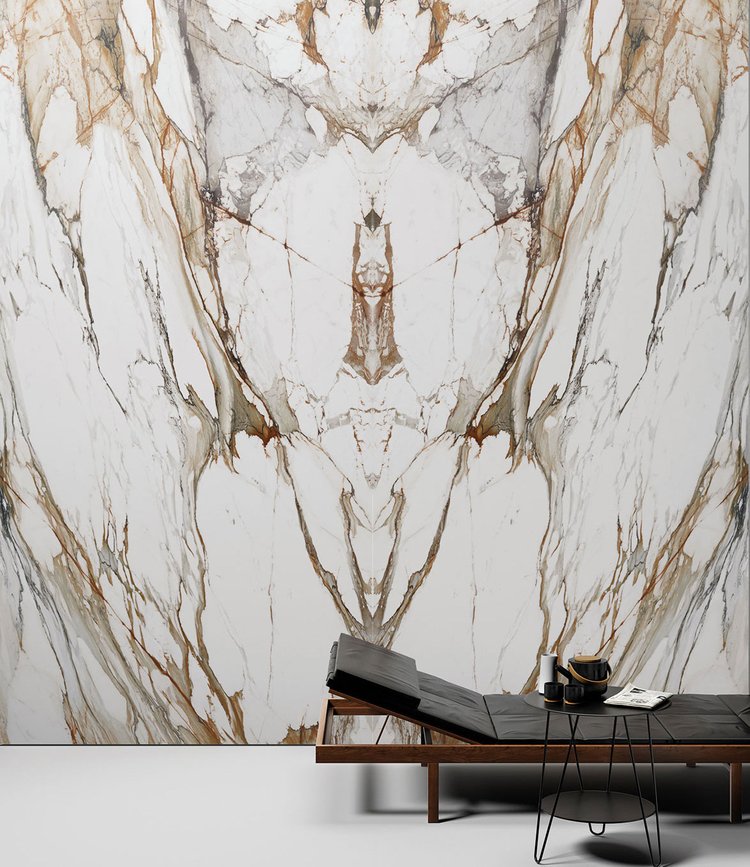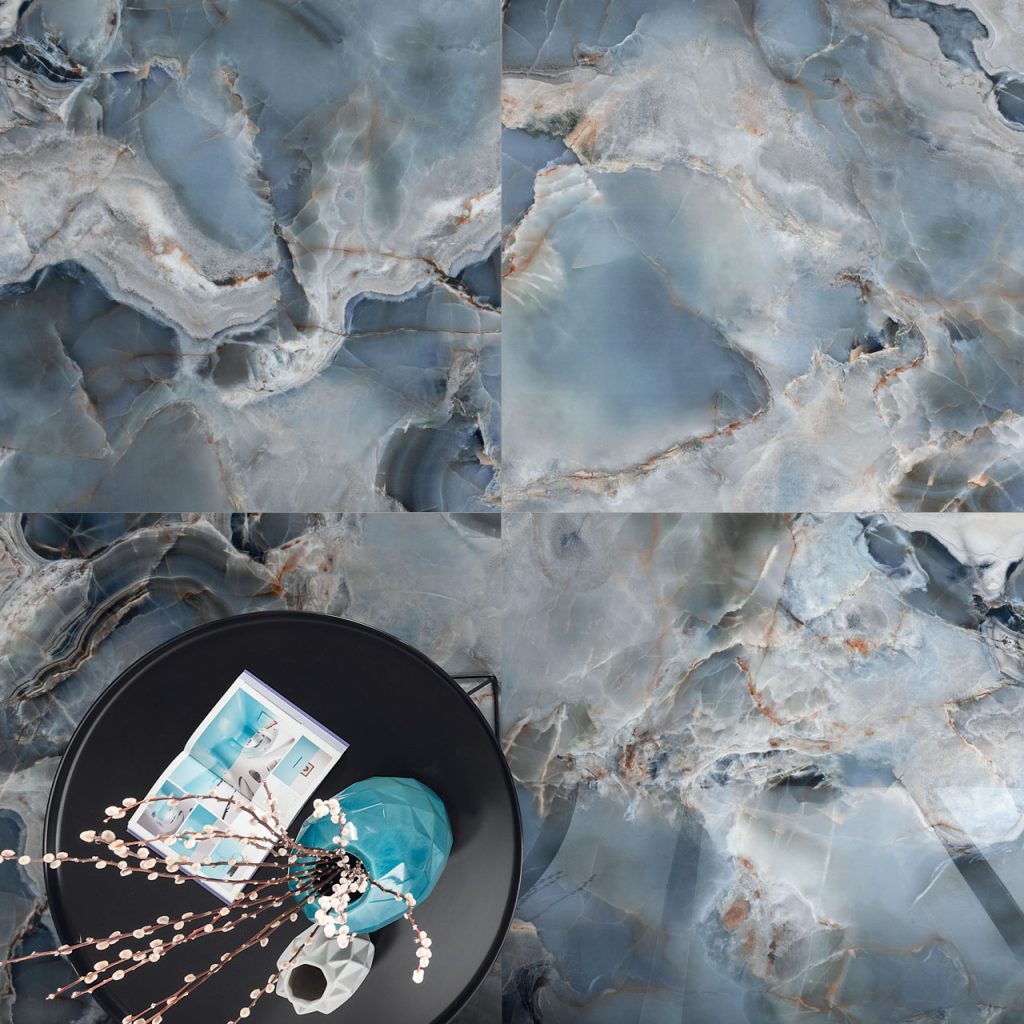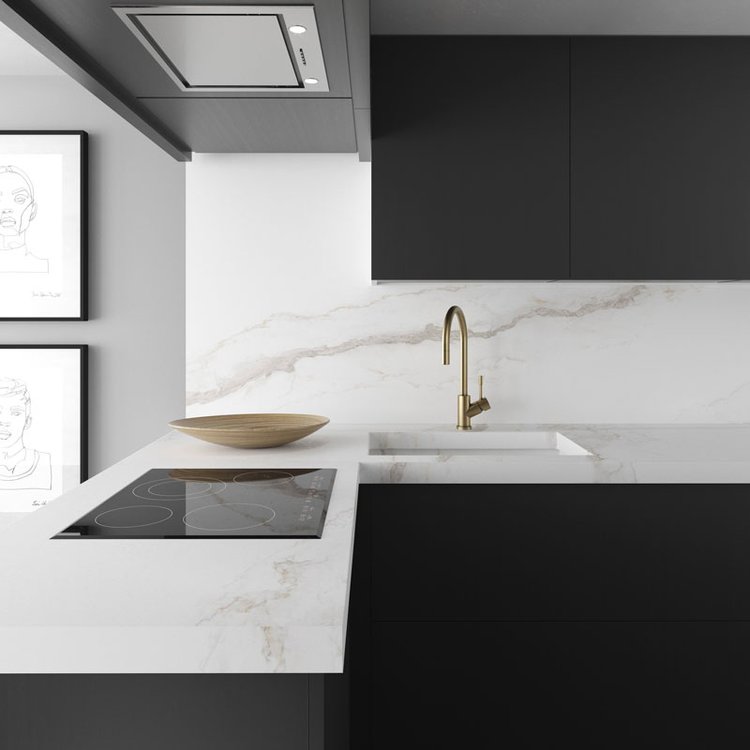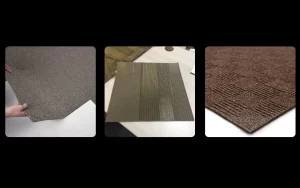The newest trends in the world of tile are the stunning porcelain slabs! If you love a solid and clean look, and want something that stands out from the rest, a porcelain slab may just be perfect for you. There are three best ways to use porcelain slabs, and we’ll outline them here.

1. Porcelain Slabs on Walls
One of the most visually pleasing ways to use a porcelain slab is to install it on the wall. You can use these as a feature wall in your living space, on the shower wall, and even on fireplaces. Many porcelain slabs are available in multi-piece series, so you can achieve a continuous pattern across an entire wall.
Some slabs are also available in slightly smaller formats, such as 24″x48″ sizes. These are best for smaller bathroom walls, floors, and even kitchen and bathroom backsplashes. Most slabs vary in size, usually within the range of 48″x110″ to 65″x130″, though they can potentially be made in even larger sizes such as 160″x320″.
Using a slab on your wall can instantly change the feel of any space, and is a great way to add a pop of colour or a complementary pattern to your living space.

2. Slabs on Floors
Just like wall applications, porcelain slabs on your floors will instantly change the way you experience your home. Tiled floors are common in most households, but not many people have made the switch to slab flooring.
One of the benefits of using slabs on your floors is minimal grout lines. Grout lines tend to get dirty and discoloured quickly when used in floor applications, and slabs almost completely eliminate this problem. If the room is the right size, you may not need any grout lines at all! Gone are the days of scrubbing grout on your hands and knees, and you can enjoy your gorgeous tiled floor for decades.
Porcelain slabs are most often used on bathroom floors, as the smaller space will make the design of the tile really stand out. We recommend using a colour theme to compliment your slab, with similar accent colours to bring everything together.
Large format tile requires extra support when used in floor applications, so it is important to ensure that your subfloor is properly layered and installed to support the weight of the porcelain. Anti-fracture tile membrane is often used with slabs to reduce the chance of cracking due to subfloor shifting.

3. Countertop Slabs
You may be used to seeing quartz and granite countertops, but have you ever seen a porcelain slab countertop?
Porcelain slabs are amazing countertop materials. Porcelain is extremely durable and non-porous, and can stand up to even commercial applications.
Quartz is the most common countertop material after laminate, but there are a few problems with it. Quartz is mostly made of silica, and the manufacturing process of quartz can be dangerous to the health of the people that make it. Once it is manufactured, there is no risk to the health of the homeowner. Additionally, quartz is a glass composite material, meaning it is not strong enough to withstand high temperatures. If you set a hot pot down on your quartz countertop, it may break.
Porcelain countertops are durable enough to handle hot cookware and will never break due to heat spikes. Additionally, porcelain slabs are available in many more colours and designs, so you will never be limited to only a few options.
Since it is non-porous, porcelain is also a great material for commercial countertops. Even harsh chemicals like acetone and bleach will not damage the surface of the porcelain, which makes it perfect for applications like hair and nail salons.

Will porcelain slabs work for your home? Contact us for more information on how to choose the best flooring product for you.







